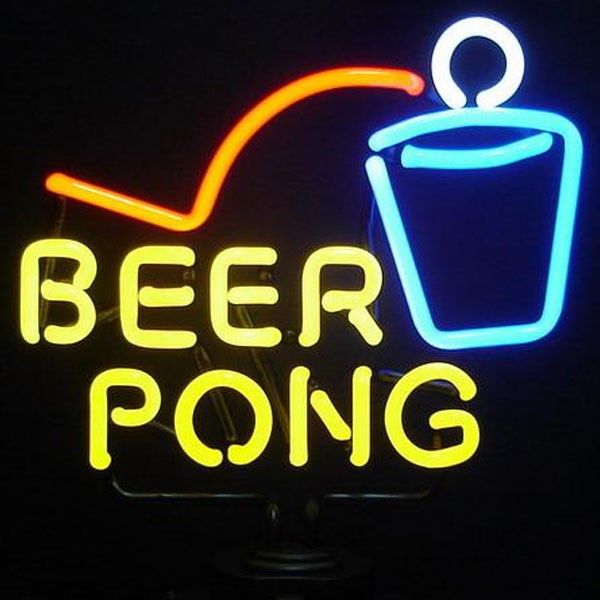 |
THE
PHYSICS BEHIND THE GAME |
 |
| HOME |
HISTORY |
RULES |
TYPES OF SHOTS |
WORK
& ENERGY |
BIBLIOGRAPHY |
|
THE THREE
BASIC SHOTS In beer pong
there is three basic shots: the arc-shot, the
fastball, and the bounce shot. Each shot has its
pros and cons and are generally used different
situations during the game. For example, when a
player intends to catch up or gain the lead by two
cups the bounce shot is the best shot to use. Lets
go over the basic physics in each shot. THE
ARC SHOT This shot is
characterized by maximizing the balls height
resulting in a optimal angle of entry. In order to
obtain this large maximum height there must be a
large change in height from the release point to the
peak height. This is achieved by maximizing the
balls vertical velocity in the y-direction. The ball
follows the path of a simple projectile motion. Due
to the force of gravity the velocity in the
y-direction accelerates negatively downward while
the velocity in the x-direction remains constant. By
using the simple kinematic equation below we can
determine that the final velocity in the y-direction
is proportional to the change in the height.
Therefore an increase in the change in height
corresponds directly to an increase in angle of
entry thereby increasing the likelihood of making
more cups. THE
FASTBALL The fastball
is characterized by its large horizontal velocity
and small release angle. The fastball has a small
change in height from release point to peak height
resulting in a poor angle of entry. This shot is
optimal in a situation of an outdoor game where
players have a strong crosswind. With a shorter
flight time the ball will be effective less
intensely by external forces. This shot is also
common when trying to knock your opponents cup over
due to the balls large velocity in the x-direction. THE BOUNCE
SHOT |